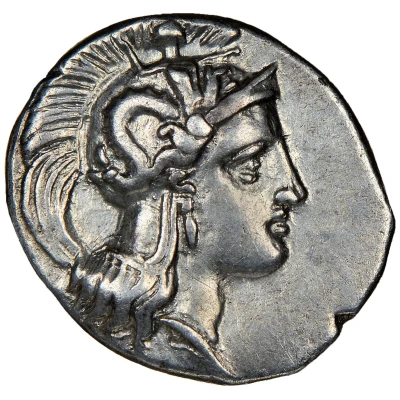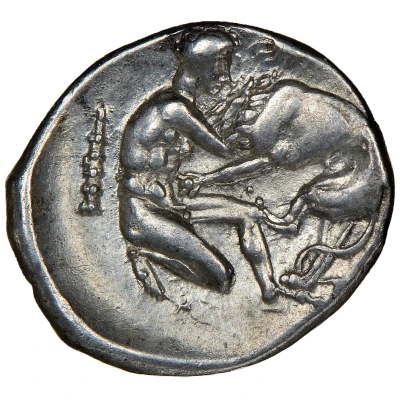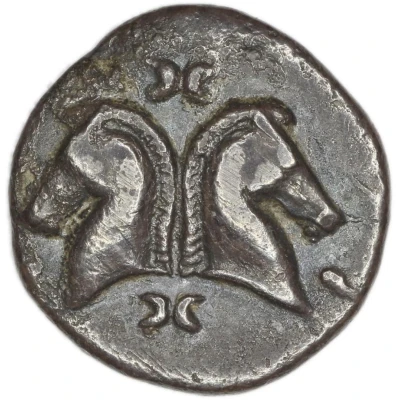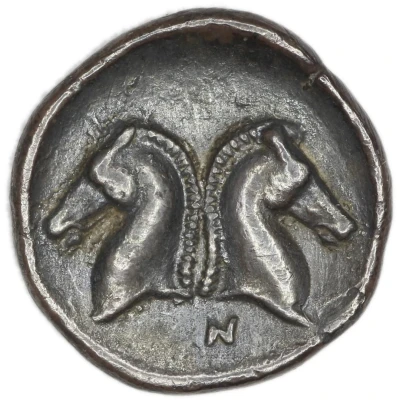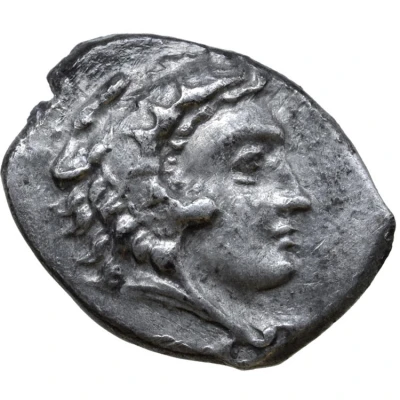
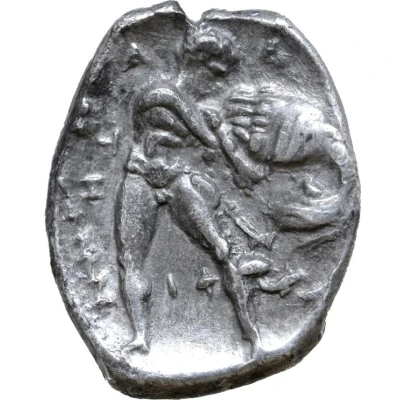

© Roma Numismatics Limited
Diobol 325 BC - 280 BC
| Silver | 1.24 g | 14 mm |
| Issuer | Tarentum (Calabria) |
|---|---|
| Type | Standard circulation coin |
| Years | 325 BC - 280 BC |
| Value | Diobol (⅓) |
| Currency | Campanian (Italic-Achaean) drachm |
| Composition | Silver |
| Weight | 1.24 g |
| Diameter | 14 mm |
| Shape | Round (irregular) |
| Technique | Hammered |
| Orientation | Variable alignment ↺ |
| Demonetized | Yes |
| Updated | 2024-10-09 |
| Numista | N#195469 |
|---|---|
| Rarity index | 100% |
Reverse
Herakles strangling the Nemean Lion; ΤΗ astragalos and club to left; ΙΦ below.
Script: Greek
Lettering:
ΤΗ
ΙΦ
Interesting fact
The Diobol coin was used as a form of currency in the ancient Greek city of Tarentum, which is now located in Calabria, Italy. The coin features an image of a mythical creature called a "Taras," which is a young boy riding a dolphin. This image was a symbol of the city and its connection to the sea. The coin was also adorned with other symbols and letters that represented the city's name and the ruling authority at the time. It's interesting to note that the Diobol coin was made of silver, which was a valuable and widely used metal in ancient times. The coin's weight of 1.24 grams is relatively small compared to modern-day coins, but it was a significant amount for its time. The fact that the coin has survived for centuries and is still studied and admired today is a testament to the craftsmanship and durability of ancient Greek coinage.
